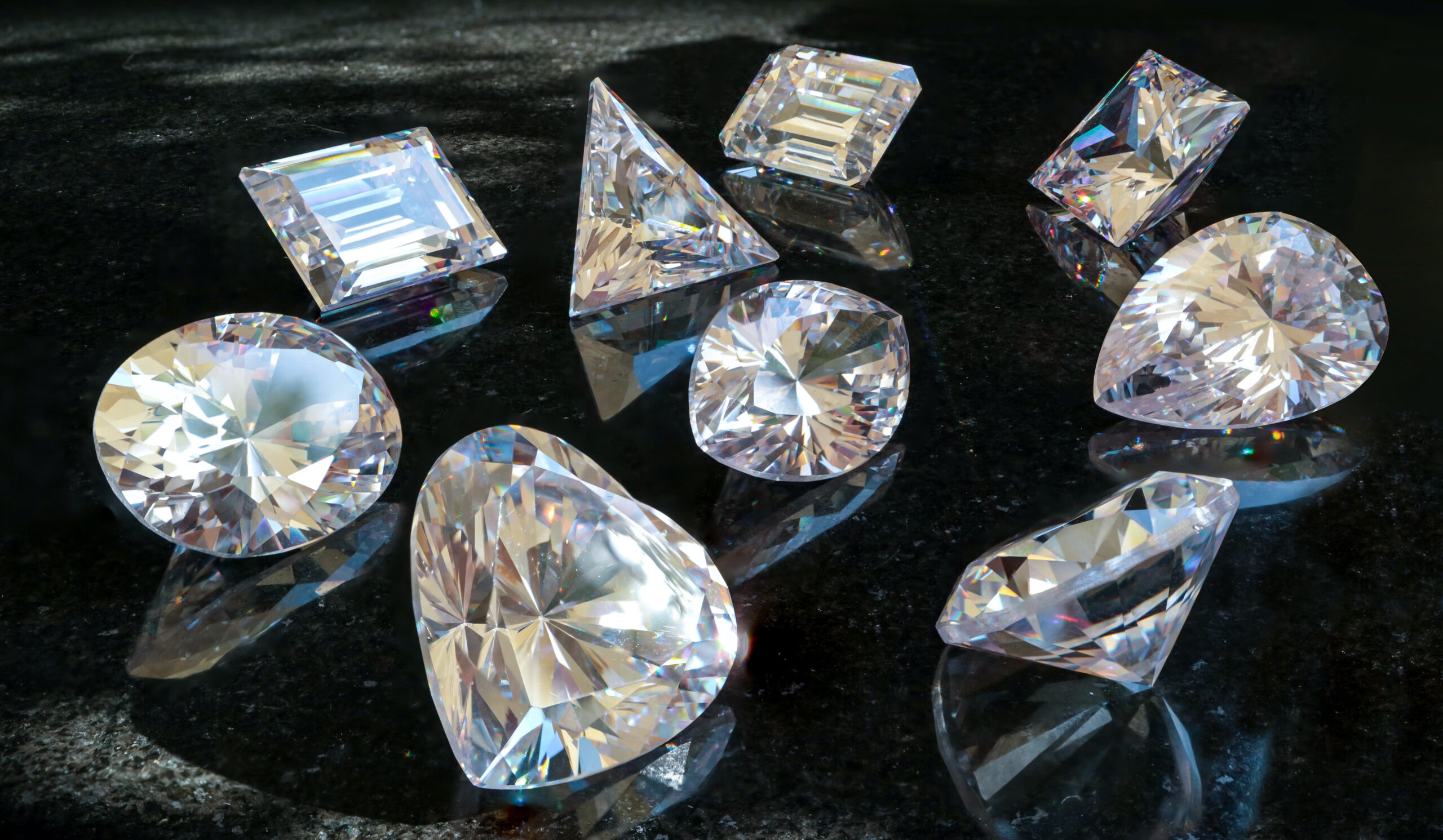In the world of precious gemstones, diamonds have always held a special place. Their unmatched beauty, rarity, and symbolism have made them a symbol of love, commitment, and luxury. However, the process of extracting natural diamonds has raised environmental and ethical concerns over the years. Enter the era of lab grown diamonds, a revolutionary alternative that is changing the landscape of the jewelry industry. In this article, we will explore the fascinating world of lab grown diamonds, their benefits, and their impact on the jewelry market.
The Birth of Lab Grown Diamonds
Lab grown diamonds, also known as synthetic diamonds or cultured diamonds, are created in controlled laboratory environments rather than being mined from the earth. The concept of creating diamonds in a laboratory dates back to the mid-20th century, but it wasn’t until recent technological advancements that this became a commercially viable and eco-friendly option.
How Lab Grown Diamonds Are Created
Lab grown diamonds are formed using two primary methods: High-Pressure High-Temperature (HPHT) and Chemical Vapor Deposition (CVD). These methods replicate the conditions under which natural diamonds are formed deep within the Earth’s crust.
1. High-Pressure High-Temperature (HPHT)
HPHT diamonds are created by subjecting a tiny diamond seed to extreme pressure and high temperatures, causing carbon atoms to crystallize and form a diamond. This method mimics the natural diamond formation process.
2. Chemical Vapor Deposition (CVD)
CVD diamonds are grown by placing a diamond seed in a chamber filled with carbon-rich gas. When heated, the gas breaks down, and carbon atoms are deposited onto the seed, gradually building up a diamond layer by layer.
The Emotional Value of Lab Grown Diamonds
While lab grown diamonds excel in terms of ethics, sustainability, and quality, they also hold significant emotional value. For many couples, choosing a lab-grown diamond for their engagement ring represents a commitment to a sustainable future. It symbolizes a pledge not only to each other but also to the planet.
Customization and Personalization
Lab grown diamonds offer an exciting world of customization. Couples can work with jewelers to create bespoke pieces of jewelry that reflect their unique style and preferences. Whether it’s a classic solitaire ring or a contemporary halo design, lab grown diamonds can be tailored to match individual tastes.
A Story to Share
Each lab grown diamond has a story of its own, rooted in cutting-edge science and sustainability. Couples who choose these diamonds can proudly share the story behind their ring—a story of ethical choices, environmental responsibility, and a commitment to a brighter future.
The Role of Lab Grown Diamonds in Art and Fashion
Beyond engagement rings and traditional jewelry, lab grown diamonds are making waves in the worlds of art and fashion. Designers and artists are increasingly using these diamonds to create stunning and sustainable pieces.
Artistic Creations
Lab grown diamonds are valued not only for their brilliance but also for their unique shapes and colors. Artists are incorporating these gems into sculptures, paintings, and installations, adding a touch of ethereal beauty to their creations.
Ethical Fashion
The fashion industry, known for its environmental and ethical challenges, is also turning to lab grown diamonds. Sustainable fashion brands are using these gems to adorn clothing and accessories, promoting ethical sourcing and responsible consumption.
Final Thoughts
Lab grown diamonds are more than just an alternative to traditional diamonds; they represent a paradigm shift in the jewelry industry. Their ethical and sustainable credentials, combined with their undeniable beauty, make them a compelling choice for the conscientious consumer. As technology continues to evolve and consumer awareness grows, lab-grown diamonds are poised to shine even brighter in the world of luxury and elegance.
The Advantages of Lab Grown Diamonds
Lab grown diamonds offer numerous advantages that are driving their popularity among consumers, jewelers, and environmentalists alike.
1. Ethical Sourcing
One of the primary reasons for the rise of lab grown diamonds is their ethical sourcing. Traditional diamond mining has been associated with human rights violations and environmental damage. In contrast, lab grown diamonds are conflict free and have a minimal ecological footprint.
2. Environmental Impact
Mining natural diamonds is an energy-intensive process that involves significant land disruption. In contrast, Lab Grown Diamond Growers require fewer resources and produce less waste, making them a greener alternative.
3. Quality and Purity
Lab grown diamonds often exhibit fewer impurities than natural diamonds, resulting in superior clarity and color. They are also available in a wider range of sizes and shapes, offering more customization options for consumers.
4. Cost-Effective
While natural diamonds are subject to market price fluctuations and high markups, lab grown diamonds are more affordable. This accessibility has opened up the world of diamond jewelry to a broader audience.
The Science Behind Lab Grown Diamonds
To truly appreciate the marvel of lab grown diamonds, it’s essential to understand the intricate scientific processes that bring them to life. While the concept of growing diamonds in a lab may seem like science fiction, it’s firmly grounded in scientific principles.
Precision and Control
What sets lab grown diamonds apart is the level of precision and control that scientists have over their growth. In a laboratory setting, researchers can fine-tune the conditions, ensuring that each diamond is created with exact specifications. This precision allows for the production of diamonds with exceptional clarity and brilliance.
Sustainable Growth
Another noteworthy aspect is the sustainability of lab grown diamonds. The environmental impact of traditional diamond mining is well-documented, with significant land disturbance and energy consumption. In contrast, the controlled environment of a lab minimizes these ecological concerns. The carbon source used for growing diamonds is often derived from sustainable and renewable sources, further reducing the environmental footprint.
Advancements in Technology
The continuous advancement of technology is driving the growth of the lab grown diamond industry. Researchers are constantly developing new methods and techniques to improve the quality and size of these diamonds. This commitment to innovation ensures that lab grown diamonds remain a viable and competitive alternative to natural diamonds.
Lab Grown Diamonds in the Jewelry Market
The jewelry industry has been quick to embrace lab grown diamonds, recognizing their potential to disrupt the market. Many renowned jewelry brands now offer collections featuring these sustainable gems. Consumers are increasingly choosing lab grown diamonds for engagement rings, necklaces, earrings, and more.
The Role of Certification
To ensure transparency and build trust with consumers, lab grown diamonds are often accompanied by certification from reputable gemological laboratories. These certificates verify the diamond’s origin and quality, providing buyers with peace of mind.
The Future of Lab Grown Diamonds
As technology continues to advance, lab grown diamonds are expected to become even more prevalent in the jewelry market. Researchers are working on enhancing the size and quality of lab grown diamonds, making them virtually indistinguishable from their natural counterparts.
Conclusion
Lab grown diamonds represent a sustainable and ethical evolution in the world of luxury jewelry. Their rise reflects a growing awareness of the environmental and ethical issues associated with traditional diamond mining. As consumers increasingly prioritize sustainability, lab grown diamonds are poised to shape the future of the jewelry industry.




